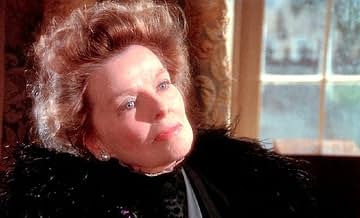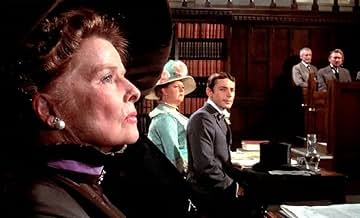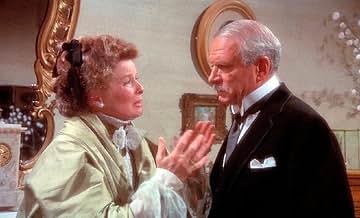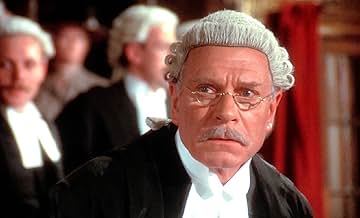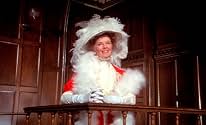Love Among the Ruins
- TV Movie
- 1975
- 1h 40m
An aging actress is being sued for breach of promise. She hires as her lawyer a man who was an ex-lover, and is still in love with her, although she doesn't know it. She realizes that the on... Read allAn aging actress is being sued for breach of promise. She hires as her lawyer a man who was an ex-lover, and is still in love with her, although she doesn't know it. She realizes that the only way to win this case and protect her assets is to destroy her reputation.An aging actress is being sued for breach of promise. She hires as her lawyer a man who was an ex-lover, and is still in love with her, although she doesn't know it. She realizes that the only way to win this case and protect her assets is to destroy her reputation.
- Won 6 Primetime Emmys
- 9 wins & 2 nominations total
- Director
- Writer
- All cast & crew
- Production, box office & more at IMDbPro
Featured reviews
Comments about the movie must include praises for the music soundtrack. It is so lovely. In one scene with Jessica and Sir Arthur sitting at their table in a restaurant; Sir Arthur comments on the music being played, and sings a few of the lyrics to Jessica. Loved that scene! Also, Sir Arthur mentions the composer's name. I cannot remember it though.
In closing, I would recommend this marvelously entertaining movie to anyone; they will not be disappointed! Also, I would "Love" to own a VHS or DVD of LAtR!
CTW
But the ways of love are never smooth and Jessica's involvement with (and subsequent rejection of) a younger man who clearly is interested in her money (and played with precise sliminess by Leigh Lawson) now has her entangled in a court case and probably not in as strong a position as she (or Sir Arthur) would like.
To complicate matters, Sir Arthur is still in love and reminds her of how they met these long years ago. Jessica's memory may not be so good, but Sir Arthur is determined to do all possible to save her from the slimey young man.
The film centers around three kinds of scenes: almost all are focussed on Olivier. In some Sir Arthur remembers his earlier time with Jessica and plots his performance in court - with his clerk and others. In these we see Sir Arthur and the feelings he still has for Jessica and his hope that maybe you can go back again.
In other scenes the focus is on Jessica and Sir Arthur, his memories, her current situation, his plans for the trial. Sir Arthur's feelings are sometimes concealed (though not always well) while Jessica (once an actress) is better at masquerading.
Finally, there are the courtroom scenes in which Olivier transcends both Olivier and Sir Arthur and shows us a barrister putting on a performance in the court that is entirely different from all we have seen Sir Arthur do before.
But Jessica is also putting on a performance, and when the depth of this performance and the deliberateness of her deceit are revealed, you suddenly have a second chance to see who Jessica is and was and maybe who she will be.
There have been a number of great filmed love stories (and Hepburn is no stranger to them), but this is a bit different - its about young love - between two people who are far from young. Its about hope and how things work out sometimes. Its funny and sad - often at the same time. It may not be a great film - but its a very good one indeed, well worth watching and rewatching.
But since it was made for TV it seems to have been destined to be quietly ignored - this is a shame as it is far better than most of the stuff thats endlessly recycled on cable.
Hepburn's solicitor, Richard Pearson, brings Hepburn and Olivier together. Hepburn is being sued for alienation of affections by a young man who swears she promised marriage to him, he who is old enough to be her grandson. Olivier is a barrister of great repute and they happen to be neighbors on the same block in London.
What Pearson doesn't know and Hepburn seems to have forgotten was that a long time ago, almost forty years, Olivier was a young law student in Toronto who was crushing out big time on young actress Hepburn. Like a good stage door Johnny, Olivier waited for her and had evening out with her and never saw her after that. She married a wealthy title and Olivier went on to a great legal career, but he's been crushing out on her since.
In today's terminology they would call the suit against Hepburn palimony. The trial portion of the film is the best with Hepburn almost seeming to work at cross purposes with her own attorney. The opposing barrister is Colin Blakely who played a lot of sleazy types in films. If the British have lawyer jokes in their culture, Blakely would seem like a great candidate. The man just oozed shyster from his very pores.
Thirty years earlier had this film been made it would have had a theatrical release. Movie public tastes change so it got relegated to the made for TV status. Still though with the presence of those two star names it should not be missed.
Love Among the Ruins was directed by George Cukor and deserved Emmys were won all around, by Cukor, Olivier, and Hepburn. They should all get our thanks for showing that quality still had an audience.
In this charming, heartwarming second-chance romance, Laurence Olivier gives an adorable performance. He's got a few miles on him, but he's full of vigor and innocently charming. He's a hopeless romantic, winning over the audience's heart immediately so they hope he'll eventually win Kate's heart as well. Kate is funny and spunky, and while she isn't immediately as likable as her costar, she's adorable and charming in her own way.
The main plot—or a side-plot, depending on how much you value the romance—is the court case. Kate is being sued for breech of promise by a significantly younger man, Leigh Lawson. In the olden days, "breech of promise" meant that someone had broken an engagement, and the jilted party could sue for emotional damages. As Kate is a wealthy widow, Leigh might be a gold digger; then again, Kate could be an outrageous flirt who refuses to act her age. You'll have to watch the movie to find out.
Love Among the Ruins swept the 1976 Emmys, winning statues for Kate, Larry, director George Cukor, writer James Costigan, art direction, and costume design. While you can easily imagine the script had been adapted from a play, Costigan's script was originally written for television. It's smart and sassy, with hilarious references to the leading lady's age without being insulting. Perhaps the cutest aspect of the film is the chemistry between the two leads. Kate and Larry were lifelong friends but had never made a film together until this one. You can clearly see how much they enjoy each other's company, and it's sheer magic to see such professionals acting alongside each other.
Did you know
- TriviaIn 1973, during an interview on the The Dick Cavett Show (1968), Cavett asked Katharine Hepburn if she was sorry she had never acted with Sir Laurence Olivier. With a smile and a laugh, Hepburn replied, "Well, neither of us is dead yet. Even though you may think so." Two years later, Hepburn and Olivier made this movie together.
- GoofsThe premise of the movie is invalid because only women could sue for breach of promise to marry, not men.
- Quotes
Sir Arthur Glanville-Jones: Are you dining at home?
Druce: Yes, Alice expects me. Here, um, will you come too? Are you free?
Sir Arthur Glanville-Jones: My dear boy, I am freedom's prisoner.
- ConnectionsFeatured in The 27th Annual Primetime Emmy Awards (1975)
Details
- Release date
- Country of origin
- Language
- Also known as
- Liebe in der Dämmerung
- Filming locations
- St Pancras International Railway Station, Euston Road, St Pancras, London, Greater London, England, UK(Courtroom exteriors, corridors and staircases.)
- Production company
- See more company credits at IMDbPro
Contribute to this page




